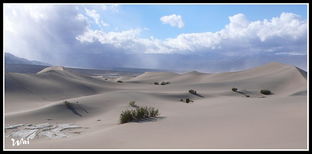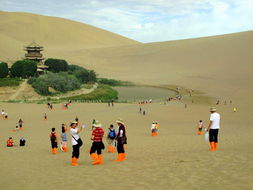Biggest Sand Dunes in Michigan: A Detailed Exploration
Michigan, known for its stunning lakes and picturesque landscapes, also boasts a unique geological feature that is often overlooked: the largest sand dunes in the state. These dunes are not just a sight to behold but also a testament to the region’s rich history and natural beauty. Let’s delve into the details of these majestic sand dunes, their formation, and what makes them so special.
Formation of the Dunes

The sand dunes in Michigan are the result of glacial activity that occurred thousands of years ago. As the glaciers retreated, they left behind a vast amount of sand and gravel. This material was then carried by wind and water, eventually forming the towering dunes we see today.
One of the most significant factors in the formation of these dunes was the glacial lake that once covered much of the region. The lake’s waves and currents deposited layers of sand and gravel, creating the foundation for the dunes. Over time, the wind has eroded and reshaped these deposits, resulting in the unique dune formations we see today.
Location and Size

The largest sand dunes in Michigan are located in the Sleeping Bear Dunes National Lakeshore, which spans approximately 73,000 acres along the Lake Michigan shoreline. This area is renowned for its stunning dunes, which can reach heights of over 450 feet.
Within the national lakeshore, there are several notable dune areas, including the Dune Climb, which is a popular spot for hiking and sightseeing. The Dune Climb offers panoramic views of the surrounding landscape and is a must-visit for anyone interested in experiencing the grandeur of these dunes.
Flora and Fauna

The sand dunes in Michigan are home to a diverse range of plant and animal life. The unique environment created by the dunes has allowed for the development of specialized ecosystems that are not found elsewhere in the state.
One of the most notable plant species found in the dunes is the beach grass, which helps to stabilize the sand and prevent erosion. Other plant species, such as the dune lupine and the dune thistle, have adapted to the harsh conditions of the dunes and play a crucial role in the local ecosystem.
Animal life in the dunes includes a variety of birds, mammals, and insects. The dunes are home to several species of birds, including the peregrine falcon and the American kestrel. Mammals such as the deer mouse and the meadow vole can also be found in the dune environment.
Recreation and Tourism
The Sleeping Bear Dunes National Lakeshore is a popular destination for outdoor enthusiasts and tourists alike. The dunes offer a wide range of recreational activities, including hiking, biking, and camping.
Hiking is one of the most popular activities in the dunes, with numerous trails of varying difficulty levels. The dune climb, as mentioned earlier, is a must-try for those looking for a challenging hike with stunning views. Other popular trails include the Dune Overlook Trail and the Lake Michigan Trail.
Biking is also a popular activity in the dunes, with several bike paths and trails available for visitors to explore. Camping is another option for those looking to spend a night under the stars, with several campgrounds located within the national lakeshore.
Conservation Efforts
Conservation efforts are crucial in preserving the unique ecosystems of the Michigan sand dunes. The National Park Service, along with local organizations and volunteers, work tirelessly to protect and restore the dunes.
One of the primary goals of conservation efforts is to prevent erosion and stabilize the dunes. This is achieved through the planting of native vegetation, which helps to hold the sand in place. Additionally, the removal of invasive species and the monitoring of wildlife populations are also important aspects of conservation efforts.
Education and outreach programs are also an essential part of conservation efforts. By educating visitors about the importance of the dunes and the role they play in the local ecosystem, conservationists hope to foster a sense of stewardship and encourage responsible tourism.
Conclusion
The biggest sand dunes in Michigan are a natural wonder that offers a unique glimpse into the region’s geological history. From their formation to their diverse flora and fauna, these dunes are a testament to the power of nature and the importance of conservation. Whether you’re a hiker, biker, or simply looking for a breathtaking view, the Michigan sand dunes are a destination that should not be missed.
